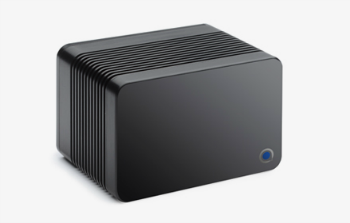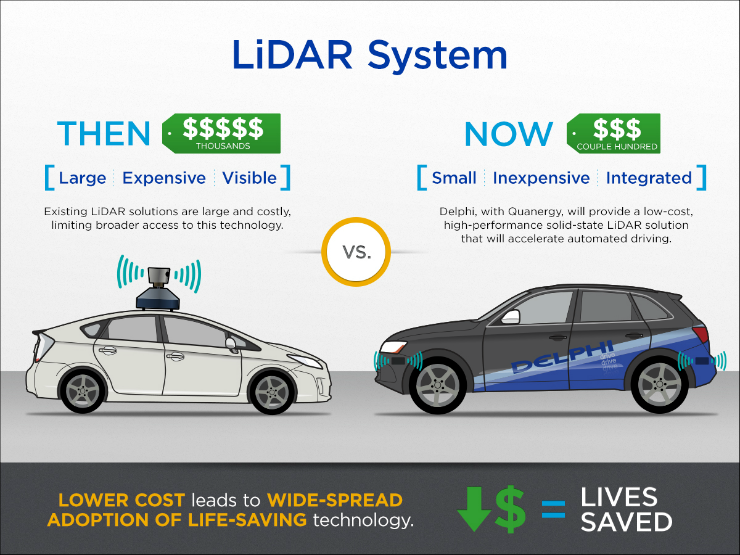Quanergy and driverless cars: Key to future is small, cheap, reliable
Quanergy may be on the edge of something big.
At the 2016 Consumer Electronics Show in January, the Sunnyvale, California-based company unveiled its S3, a solid-state LiDAR system for autonomous cars. The small S3 has no moving parts and is expected to cost only $250 per unit once it reaches production volume.
This is a major advancement on LiDAR systems already on the market, which are expensive and large.
Quanergy and driverless cars: Built-in advantages

The Quanergy S3 isn’t just better because it’s smaller and less expensive. It’s better than current LiDAR systems at figuring out what is happening all around it. A traditional LiDAR system uses a single laser and sensor that spins around on top of an autonomous car. In order for them to work, they have to be constantly moving, which introduces several failure points that can compromise the reliability of the system.
Since Quanergy’s system uses no moving parts, it can be smaller and more reliable. The solid-state LiDAR uses an optical phased array to transmit lasers, steering light pulses by shifting their phases as it is projected through the array every microsecond. Each pulse can be directed in different directions, allowing the S3 to generate a half million point-cloud data points every second, all from a device smaller than a point-and-shoot camera.
That’s crucial for autonomous vehicles, because more data means the vehicle can have a better understanding of what is happening around it. Mercedes-Benz and Quanergy have already formed a partnership to develop autonomous cars using the S3 LiDAR system. Quanergy is also working with automotive-parts-supplier Delphi to put the S3 into a Volvo XC90.

The most important thing about the S3 for the consumer remains the cost. Current LiDAR systems are exhorbitant. For example, the LIDAR system on the Google Car costs $70,000. If Quanergy hit their reasonable production goals of 100,000 units, the cost will be only $250 a unit, which is not a lofty goal when discussing car manufacturing. The cost of the LiDAR systems is possibly the biggest obstacle to getting autonomous cars on the road.
Best of all, since it is so small, the Quanergy S3 can be integrated into the car in a way that is visually seamless, unlike the Google car. Quanergy founder and CEO Louay Eldada says the S3 will be able to be placed in the grill, the rear bumpers and on the side mirrors.
Eldada says the S3 can be used to make normal cars safer as well. The S3 will allow cars to avoid an accident if you don’t react fast enough. It will help the driver not just by applying brakes like some cars do already today, but also by taking control of steering. Because the S3 is able to build a picture of what surrounds a car, it means that it can determine if a quick lane change is a better option than slamming on the brakes.
Delivery target date: 2017
While we have yet to see the S3 in action, it wouldn’t be wise to write off Quanergy as vaporware. IEEE Spectrum, a leading technology industry publication, was allowed to experience a demo at CES in January. They’re not allowed to say exactly what they saw, but they have confirmed that it definitely works. Apparently, the only issues Quanergy faces with the S3 are not related to the technology.
Development is still on schedule. Quanergy expects to have a preproduction S3 ready to demonstrate to the public in September, with deliveries of the finished product made by the start of 2017.
See also: The new Bugatti Chiron: ‘$2.6 million luxury land missile
Plus: 3 game-changing technologies from the 2016 Detroit Auto Show
